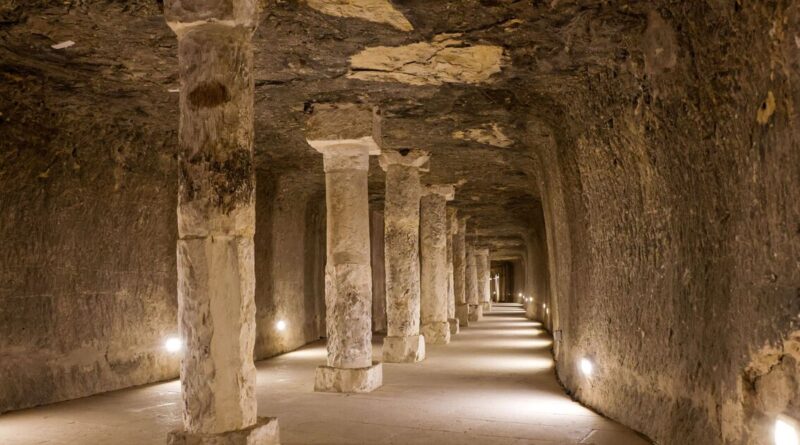Chilling archaeology mystery as 4,000-year-old painting disappears ‘cursed tomb’ | World | News
Egyptian authorities have launched an investigation after a 4,000-year-old limestone painting vanished from the Saqqara necropolis, one of Egypt’s most important and archaeologically rich sites. The missing artefact, believed to have been cut from the wall of the so-called “cursed” tomb of Khentika, was discovered missing earlier this year, the latest in a string of troubling incidents involving the loss or theft of ancient treasures.
The relief, which once adorned the walls of Khentika’s tomb, was reported missing in May by a British archaeological mission working in the area, according to Cairo 24. However, Egyptian officials only confirmed its disappearance publicly this week. The Ministry of Tourism and Antiquities said an archaeological committee has now been formed to conduct a full inventory of the tomb’s contents and determine how the artefact was removed.
Early reports suggest the missing painting depicted the ancient Egyptian calendar, which divided the year into three seasons reflecting the cycles of the River Nile: the flooding season Akhet, the planting season Proyet, and the harvest season Shomu.
Measuring around 16 by 24 inches, the limestone relief is thought to date back to the Sixth Dynasty of the Old Kingdom, between 2700 and 2200 BC.
The mastaba tomb of Khentika is among the few in Egypt to bear a curse inscribed on its facade, warning intruders of divine punishment.
British Egyptologist Harry James, who co-authored a study on the tomb in the 1950s, described its inscriptions as a rare example of ancient funerary warnings.
The tomb, first excavated in the mid-20th century, had not been opened since 2019, raising questions about how the artefact was removed without detection.
The disappearance comes just days after Egyptian authorities revealed that a 3,000-year-old golden bracelet belonging to Pharaoh Amenemope had been stolen and melted down by a restoration worker at a Cairo museum.
Tourism and Antiquities Minister Sherif Fathy condemned what he called “laxity” in following security procedures, saying the theft took place as curators prepared artefacts for an overseas exhibition.
According to the Interior Ministry, four suspects were arrested in connection with the bracelet theft, including a museum restoration specialist who confessed to passing the jewel to a silver dealer.
The bracelet, which featured a lapis lazuli bead, was eventually sold and melted into other gold jewellery for around $4,000.
The back-to-back incidents have raised alarm about security and oversight in Egypt’s heritage sector, particularly as the country prepares for the opening of the long-delayed Grand Egyptian Museum near the Giza Pyramids.
The Saqqara necropolis, part of the UNESCO-listed ruins of ancient Memphis, includes the Step Pyramid of Djoser, the world’s oldest pyramid, as well as numerous smaller tombs and burial sites.
Archaeologists say the loss of the Khentika relief represents not only a cultural tragedy but also a reminder of how vulnerable Egypt’s ancient legacy remains.
An investigation into the missing painting is ongoing.




